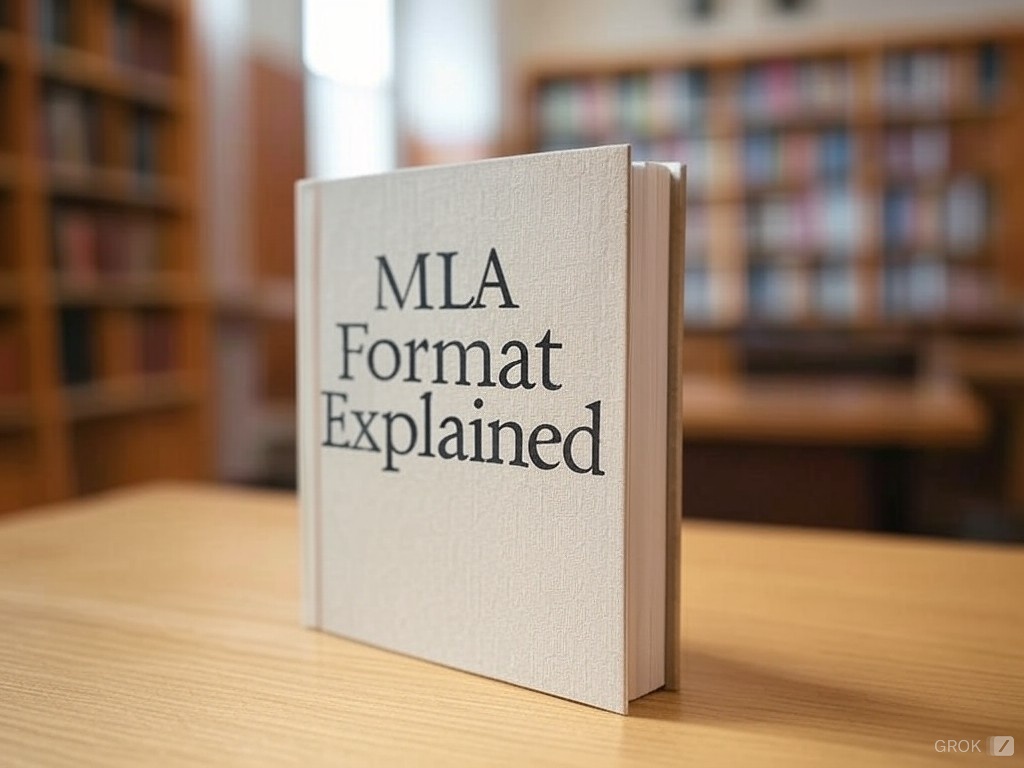What is MLA Format? A Complete Guide with Examples

What is MLA Format? A Complete Guide with Examples
MLA (Modern Language Association) format is the standard citation style for humanities disciplines, especially literature and language studies. Whether you're writing an essay about Shakespeare or analyzing contemporary poetry, understanding MLA format is essential for academic success.
This comprehensive guide will walk you through everything you need to know about MLA format, from basic document formatting to creating perfect citations. We'll provide clear examples and practical tips to help you master this widely-used citation style.
MLA format requires specific formatting for your document, in-text citations, and Works Cited page. The current version (MLA 9th edition) emphasizes flexibility to accommodate various source types while maintaining consistent citation principles.
Key Elements of MLA Format
-
Document Formatting
- 1-inch margins
- Double-spaced text
- Times New Roman 12pt
- Header with last name and page number
-
First Page Header
- Student name
- Instructor name
- Course information
- Date
-
In-Text Citations
- Author-page format
- Parenthetical citations
- Signal phrases
Citation Examples
• Basic Format: (Smith 23)
• No Author: ("Article Title" 45)
• Multiple Authors: (Smith and Jones 89)
Works Cited Page Guidelines
-
Basic Format
- Title centered: "Works Cited"
- Double spacing
- Hanging indentation
- Alphabetical order
-
Common Sources
- Books
- Articles
- Websites
- Digital media
-
Special Cases
- Multiple authors
- Online sources
- Container systems
- Incorrect header formatting
- Missing page numbers in citations
- Incorrect Works Cited formatting
Frequently Asked Questions
MLA 9th edition introduced more flexibility for citing digital sources, simplified guidelines for citing online sources, and added new guidance for citing social media. It also emphasizes the importance of citing sources consistently rather than following rigid rules.
For websites, include the author's name (if available), title of the page, website name, publication date, and URL. For example: Smith, John. "Article Title." Website Name, 15 Jan. 2023, www.website.com/article.
Yes, images must be cited both in-text and in your Works Cited page. Include the creator's name, title of the work, date of creation, and the location where you found it (museum, website, etc.).
Other Articles You Might Like
What is a Literature Review? Complete Guide for Students
Learn everything you need to know about writing a literature review, from understanding its purpose to organizing your research effectively. This comprehensive guide includes examples, templates, and expert tips for crafting compelling literature reviews.
We Trained an AI Paper Writer on Only Psychology Papers — Here's What It Produced
An unprecedented experiment examining the capabilities and limitations of domain-specific AI training in academic writing, revealing fascinating insights about artificial narrow expertise, disciplinary mimicry, and the potential for specialized AI writing assistants in scientific fields.
The Rise of AI Writing Assistants: How Yomu AI Is Transforming Content Creation
The article explores how Yomu, an AI writing assistant powered by natural language processing and machine learning, is transforming content creation by helping writers shape ideas, refine style, overcome writers block, expand vocabulary, and elevate their work beyond grammar and spelling corrections. Yomu aims to partner with human writers to amplify creativity rather than replace them.
What If Shakespeare Used an AI Essay Writer? A Style Mimicry Test
We put leading AI writing tools to the ultimate literary test—can they authentically replicate the distinctive style of William Shakespeare? This experimental analysis reveals fascinating insights about artificial intelligence's capacity to mimic history's greatest writer.
Thesis vs Dissertation: What's the Difference?
A thesis statement is the central argument or claim of your essay. It serves as the foundation for your entire piece, guiding the reader through your argument and providing a clear direction for your writing. Yet, many students struggle with crafting a concise and effective thesis statement. In this comprehensive guide, we'll explore how to write a thesis statement in a compelling way, focusing on techniques that align with what Yomu.ai and other academic AI writing tools are designed to help with...
Primary vs Secondary Sources: A Comprehensive Guide
Learn the key differences between primary and secondary sources, when to use each type, and how to evaluate their credibility. Includes practical examples and expert tips for academic research.
